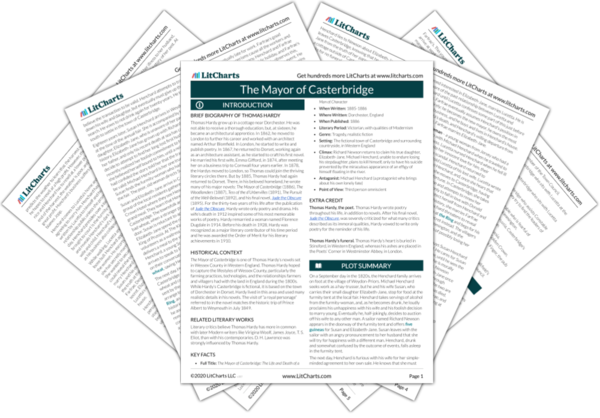The Second Bridge Quotes in The Mayor of Casterbridge
"I have heard that you think of emigrating, Mr. Henchard?" he said. "Is it true? I have a real reason for asking." Henchard withheld his answer for several instants, and then said, "Yes; it is true. I am going where you were going to a few years ago, when I prevented you and got you to bide here. 'Tis turn and turn about, isn't it! Do ye mind how we stood like this in the Chalk Walk when I persuaded 'ee to stay? You then stood without a chattel to your name, and I was the master of the house in corn Street. But now I stand without a stick or a rag, and the master of that house is you."
In the circular current imparted by the central flow the form was brought forward, till it passed under his eyes; and then he perceived with a sense of horror that it was himself. Not a man somewhat resembling him, but one in all respects his counterpart, his actual double, was floating as if dead in Ten Hatches Hole. The sense of the supernatural was strong in this unhappy man, and he turned away as one might have done in the actual presence of an appalling miracle. He covered his eyes and bowed his head. Without looking again into the stream he took his coat and hat, and went slowly away.












